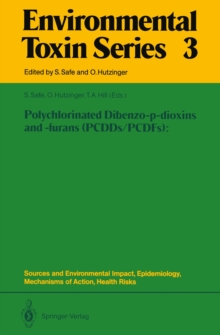
Polychlorinated Biphenyls (PCBs): Mammalian and Environmental Toxicology PDF
Edited by Stephen Safe
Part of the Environmental Toxin Series series
Description
Polychlorinated biphenyls (PCBs) have been produced commercially since be- fore 1930.
They proved to be highly versatile mixtures and their uses continued to expand during the early 1970's even after the unanticipated world-wide en- vironmental contamination had been discovered (Jensen et aI. , 1969; Koeman et aI. , 1969). Over 600,000 metric-tons were produced and/or used in the U.
S. during this time and it is estimated that worldwide production totaled about 1,200,000 metric-tons (Table 1).
With low acute toxicities (Fishbein, 1974), these mixtures were considered gen- erally biologically inactive even though industrial exposure had demonstrated he- patic and dermatological effects (Fishbein, 1974; Hansen, 1987).
Thus, use and disposal were not carefully monitored and it is estimated that one-third of the world-wide production of PCBs has been released into the global environment (Table 1).
Table 1. Estimated production and disposition of PCBs b U. s. a Worldwide 6 6 Production/use 610 X 10 kg 1200 X 10 kg Mobil environmental reservoir 82 400 Static reservoirs In service 340 Dumps 130 Total static 470 800 a NAS, 1979 b Tatsukawa and Tanaba, 1984 2 Environmental Distribution Many countries now impose strict controls on the use and release of PCBs.
Re- lease into the environment has declined dramatically in the last decade, but con- tinued release from reservoirs (Table 1) into burdened ecosystems (Table 2) ap- pears inevitable for several more decades (Barros et aI. , 1984).
Information
-
Download - Immediately Available
- Format:PDF
- Publisher:Springer Berlin Heidelberg
- Publication Date:06/12/2012
- Category:
- ISBN:9783642705502
Information
-
Download - Immediately Available
- Format:PDF
- Publisher:Springer Berlin Heidelberg
- Publication Date:06/12/2012
- Category:
- ISBN:9783642705502









